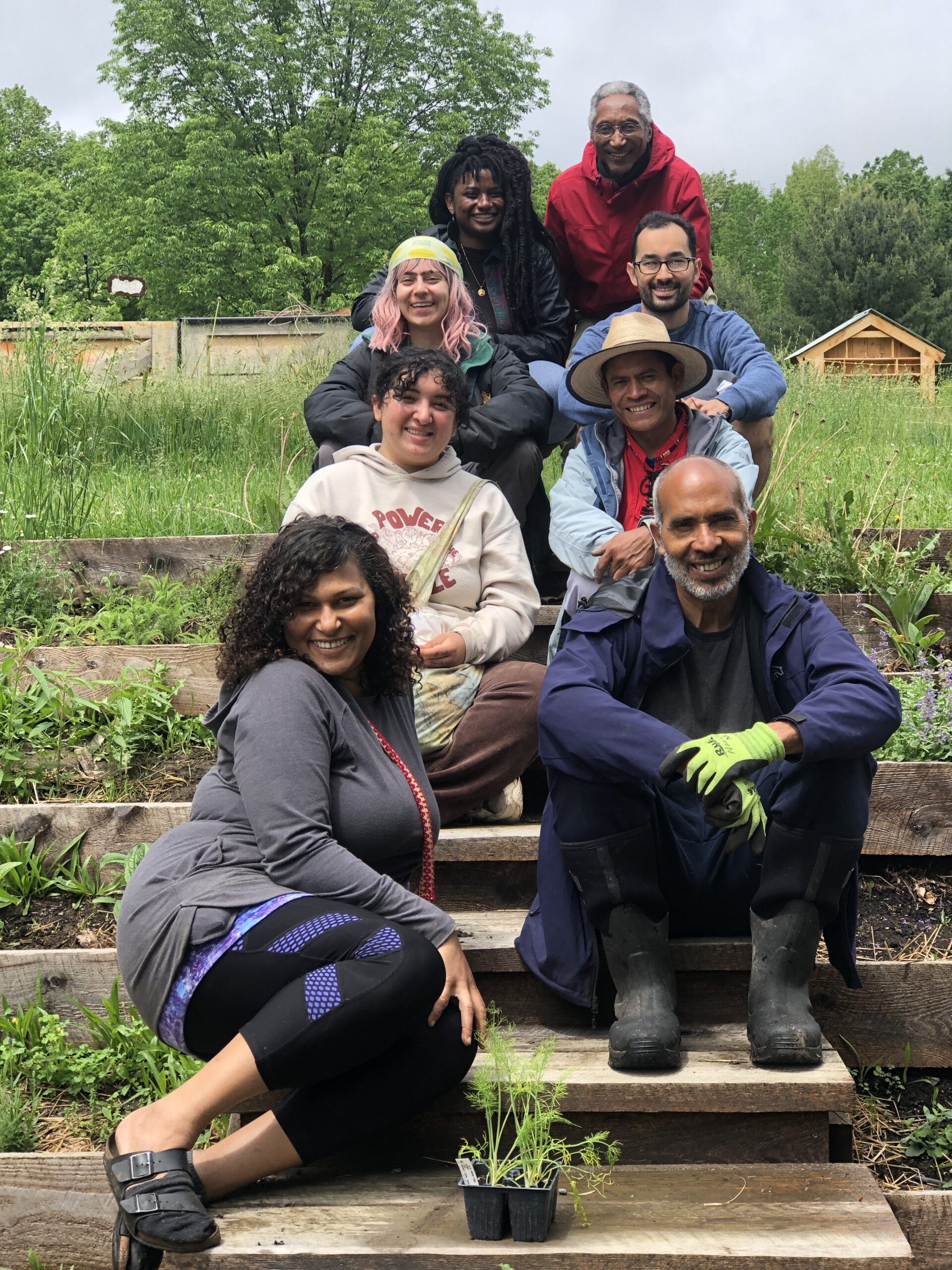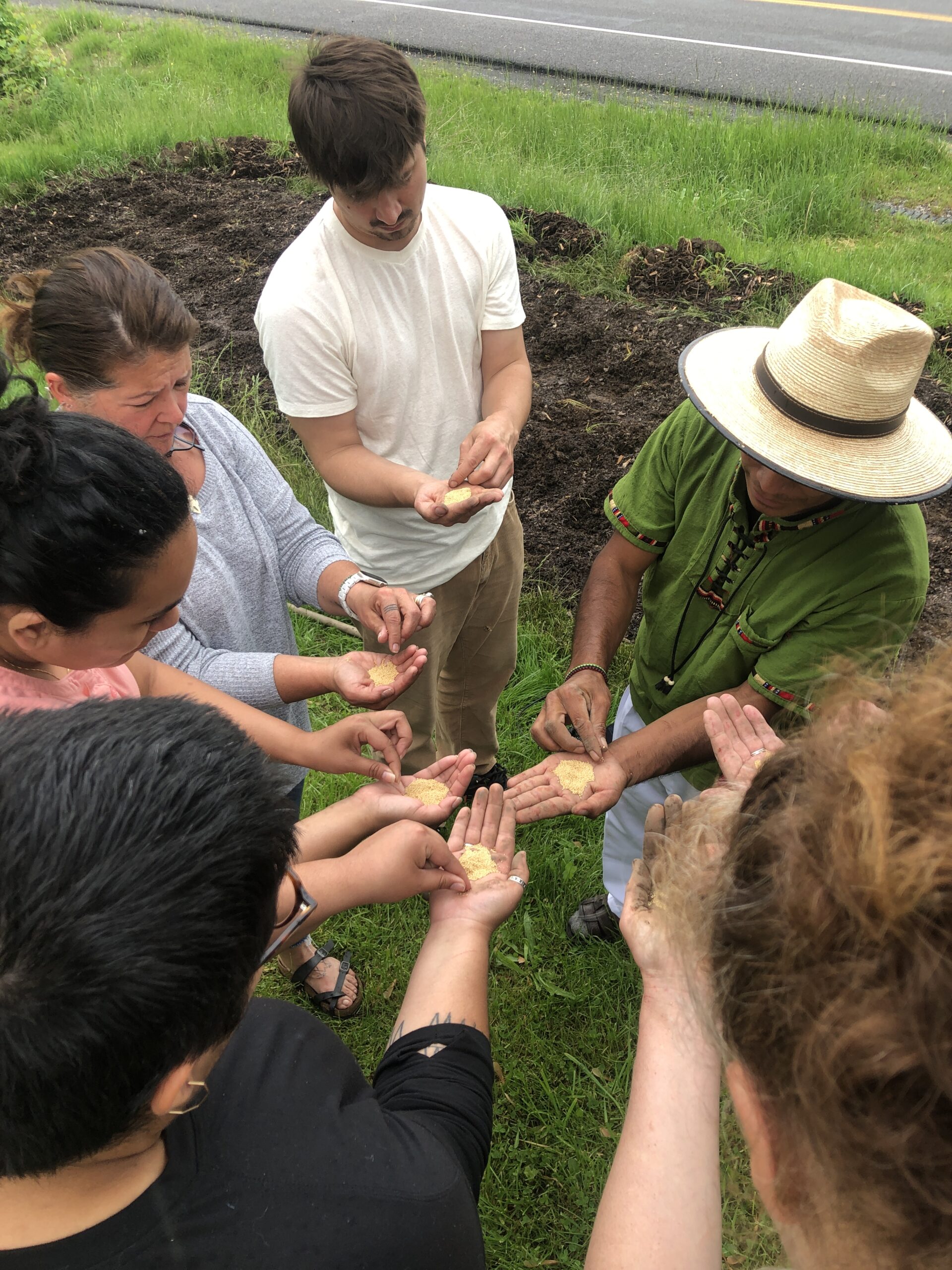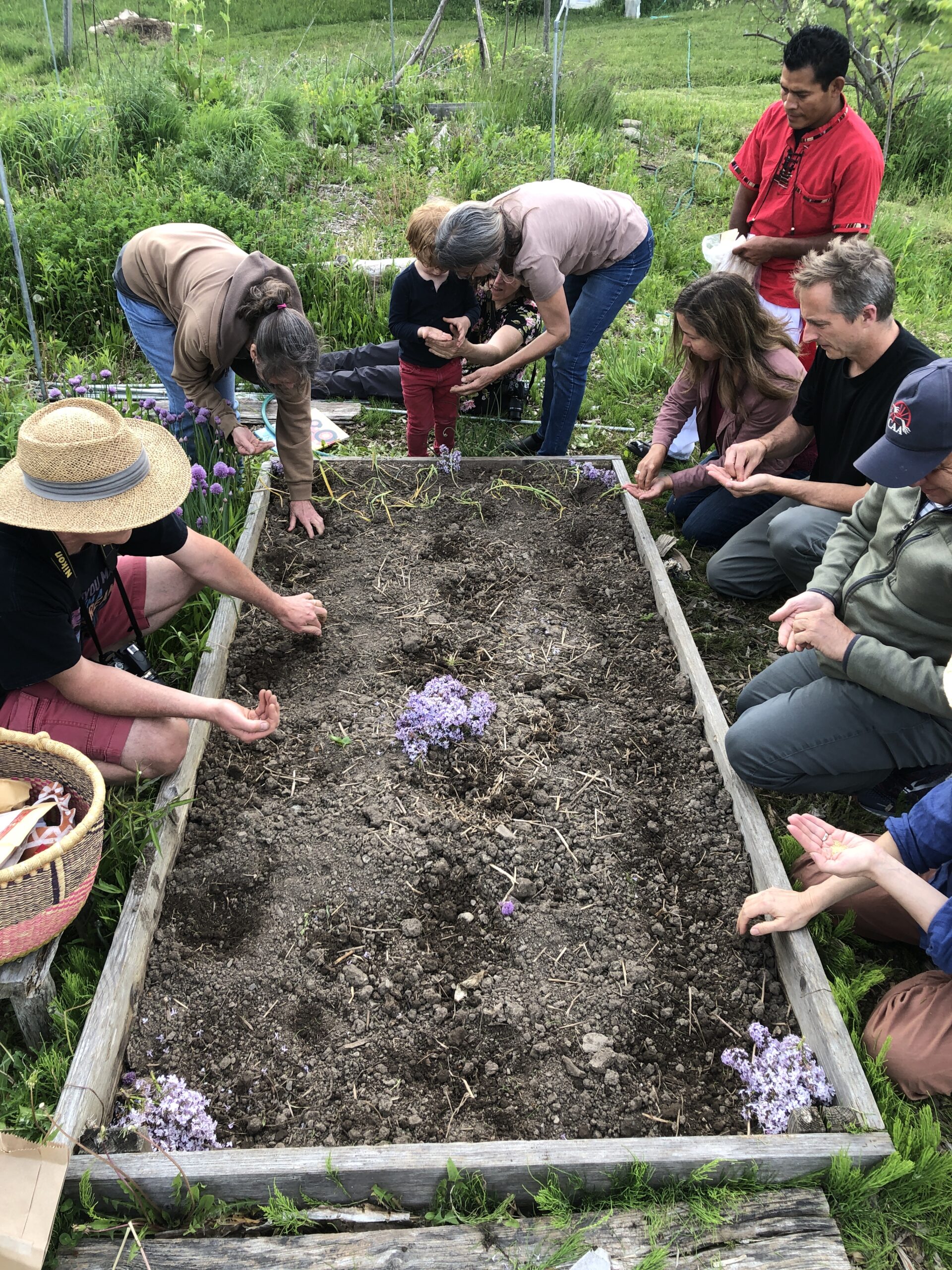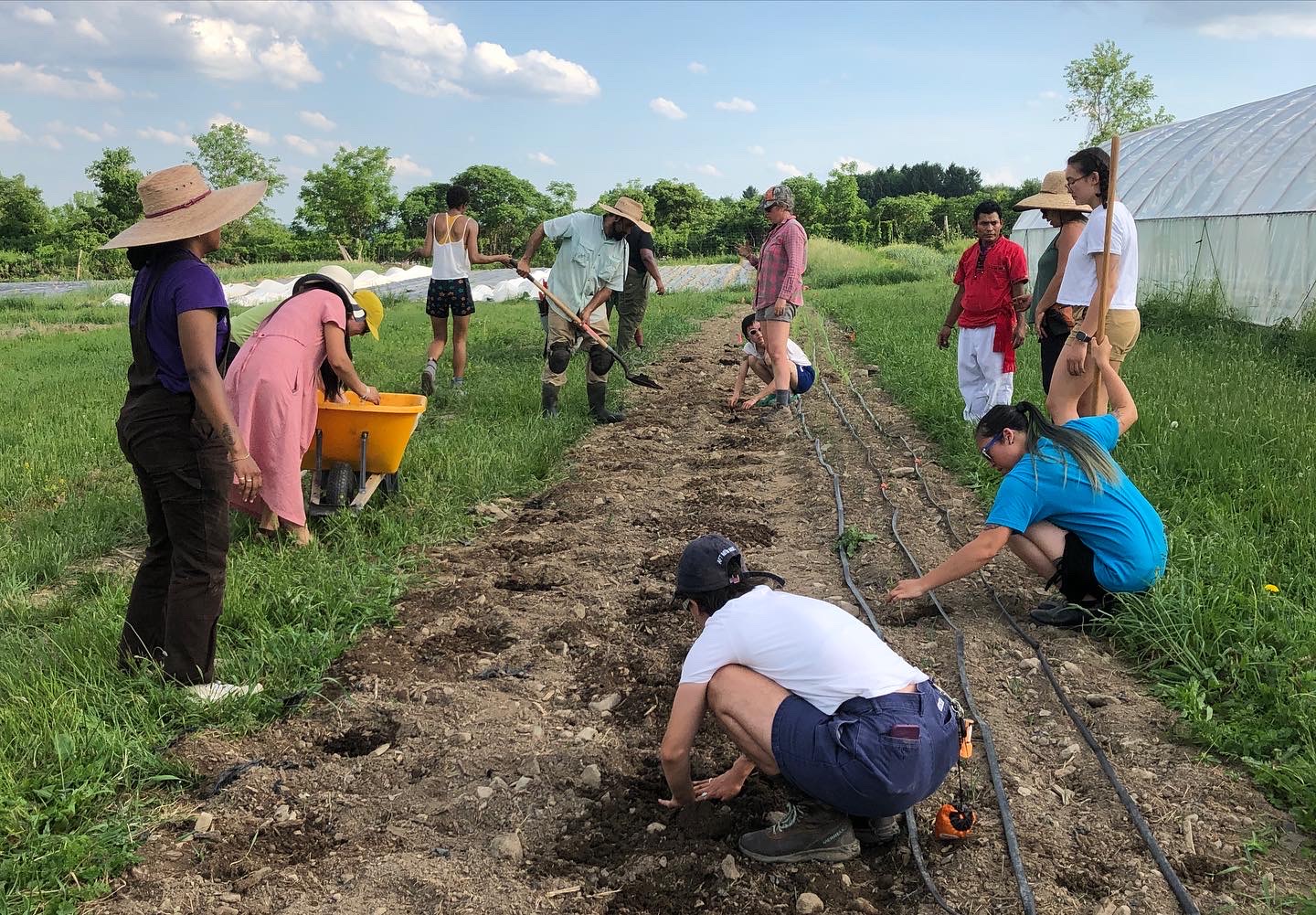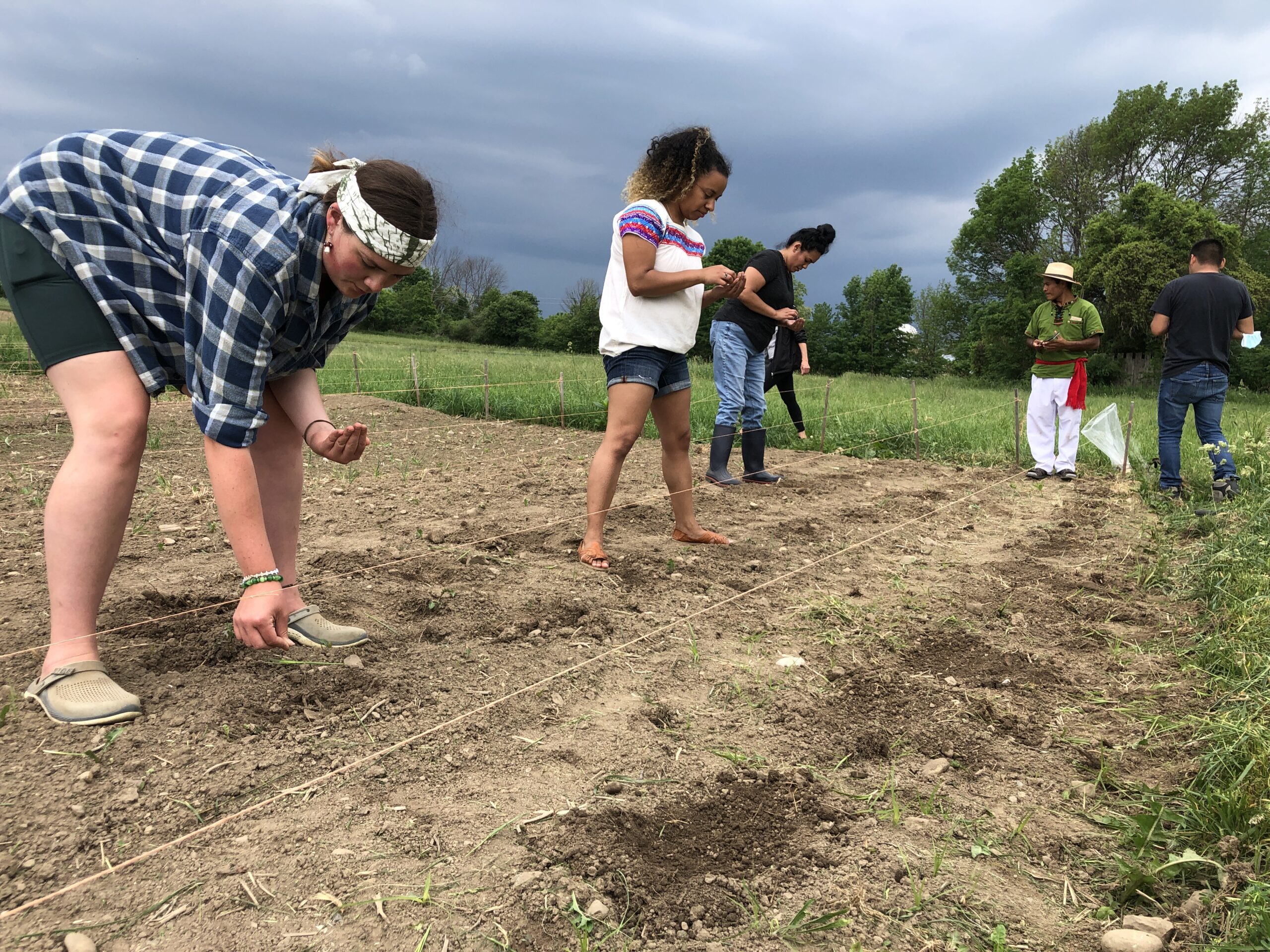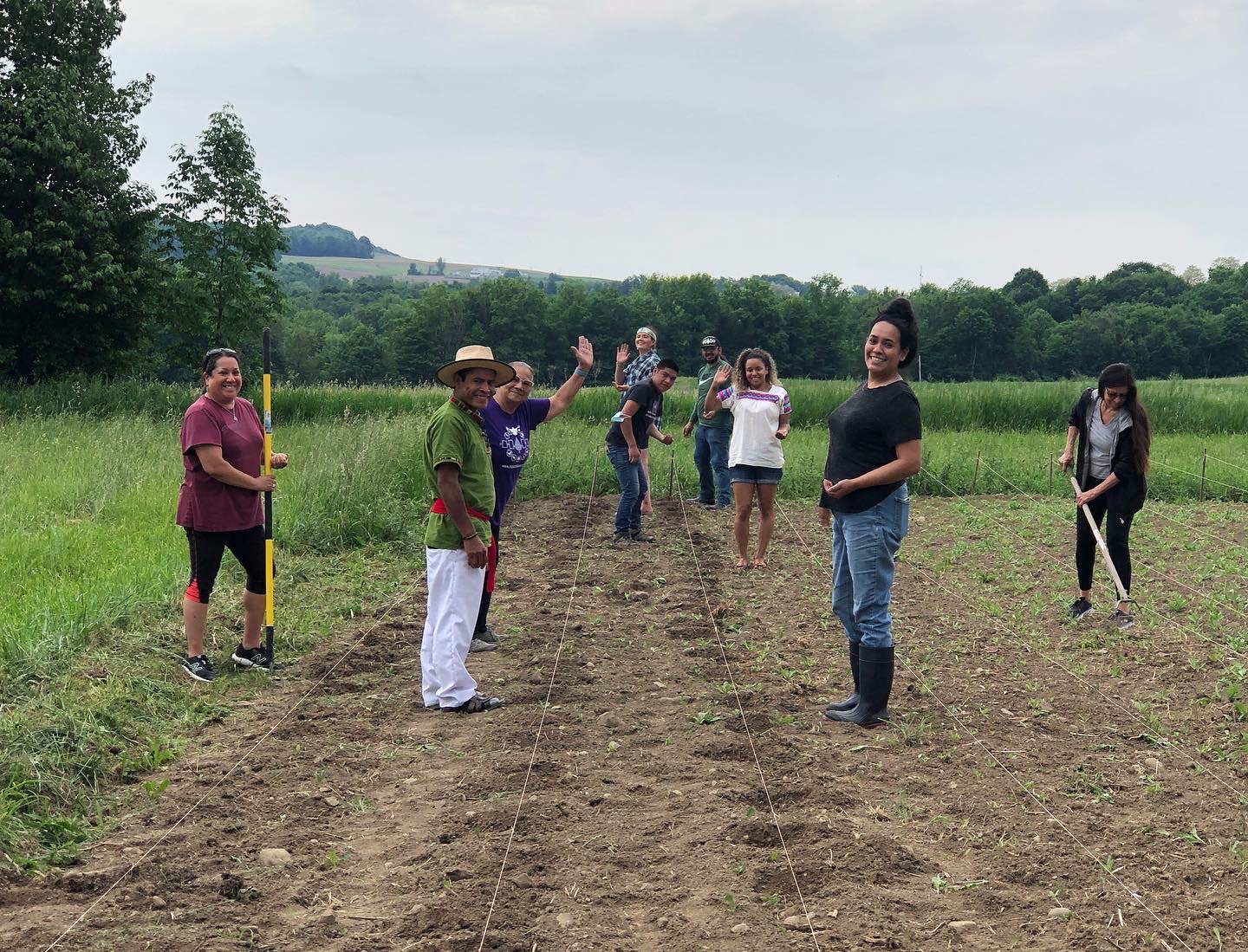Seed Travels to The Northeast
By Rebecca Cutter

Seed Travels is a movement that began 16 years ago when a group of Maya Achi farmers traveled from Guatemala to the southwest to share the story of the amaranth seed.
In May, Julian Vasquez Chun, Maya Achi farmer and Agroecology Program Coordinator for the Garden’s Edge, traveled to the Haudenosaunee (Iroquois) Territory for a series of cultural exchanges with community organizations, farms, and gardens. The trip included visits to the Iroquois White Corn Project, Ganondagan Cultural Center, the Cayuga SHARE Farm, the Traditional Center for Indigenous Knowledge and Healing, the Onondaga Nation Farm, Quarter Acre for the People, Groundswell Center for Local Food and Farming, and the Friends of Farmworkers House in Syracuse, NY. The purpose of this first-ever Seed Travels visit to the northeast was to share seed stories about plant medicines and the ancestral foods that have sustained cultures for millennia.
Often what starts off as a conversation about amaranth turns into a sharing of histories, the impacts of colonization, creation stories, and strategies for cultural revitalization. As the interpreter, I couldn’t help but notice several commonalities. For example, at the Onondaga Farm we learned about Braiding the Sacred, a network of indigenous corn growers that is similar to Seed Travels but with a focus on corn instead of amaranth. Another interesting similarity was with the packaged white corn from the Iroquois White Corn Project which is an initiative of the Seneca Nation and the packaged amaranth from the Maya Achi “Mother Earth” Association, Qachuu Aloom, in Guatemala. Both organizations are working with farmers to grow these culturally important foods. They both have processing centers where they dry, roast, and grind the amaranth seeds or corn grains to prepare ready-to-cook bags of food. In both cases, the goal is the same, to protect these ancient seed varieties and the traditional farming practices while providing families with easy access to nutritious, culturally significant food. The hope is that in time, these foods will once again become a staple of their diet.
At each site we visited there was an exchange of knowledge and a strong feeling of solidarity. We shared traditional foods and agricultural practices. Julian taught people how to plant amaranth and in the fall he will return with a Seed Travels delegation to teach people how to harvest, clean, and cook the amaranth seeds.
For the Maya, amaranth was a venerated plant and has become, more recently, a symbol of resistance. In the 1500’s the Spanish prohibited Maya farmers from growing this sacred food that was key to their survival and today, corporations like Monsanto are trying to colonize traditional agriculture with patents, GMO seeds, and agro-chemicals. Amaranth is also a symbol of resilience. In an article published in the NY Times on August 18th, 2021 H. Brown Clare reported that Palmer Amaranth, a variety common to the southwest and historically an important food crop for native communities, has evolved resistance to Monsanto’s herbicides. My colleagues and I couldn’t help smiling as we imagined the tenacious seed reclaiming its rightful place in the endless fields of GMO crops.
Although the cultivation of this proud plant with its beautiful flower was prohibited throughout Mesoamerica during the conquista and nearly eradicated as a traditional food crop, its wild ancestors have persisted. In English these smaller, thorny ancestors are known pejoratively as “pigs weed.” In Spanish it’s commonly called “bledo” which is also a pejorative term, as in, “me da un bledo” meaning, I could care less. Despite tremendous adversity, amaranth never disappeared, she is one of the most resilient seeds on Earth and today, people from all continents enjoy growing and eating her leaves and her seeds!
As the effects of climate change, the rising cost of fuel, and market destabilization become more noticeable, might we grow wise to the traditional plant knowledge of the Maya who grow amaranth to survive? Our food security depends on plants high in nutritional value and capable of withstanding harsh weather conditions.
In Guatemala, where 50% of children five and under suffer from chronic malnutrition, the resurgence of amaranth is making a difference. In the Maya Achi region where Julian is from our partner organization, Qachuu Aloom, purchases 3,000 pounds of amaranth seeds from its members each year. In their processing plant they pop the seeds, then further prepare the popped amaranth to sell as packages of flour, cereal, and cookies. One cup of cooked amaranth has 251 calories, 9.4g protein, 3.9g of fat, 46g of carbohydrates, and 5.2g fiber. It’s also an excellent source of manganese, phosphorus, magnesium, and iron, and it’s rich in zinc, vitamin B6, B5, and folate.
To learn how to grow and harvest Amaranth seeds and how to clean and cook them, go to our website, gardensedge.org and join our mailing list. We’ll invite you to our next Seed Travels event in your region.
Here’s a fun challenge for us all…
Growing native and climate adapted seeds, strengthening our local food systems, and supporting small farms is an important way to build climate resilience.
This growing season, commit to learning the seed story of a few of your favorite foods, medicinal plants, or pollinator plants. Practice growing them, selecting seeds, and cleaning them to share with friends and neighbors. We may never become completely self-reliant but seed saving is an important step towards creating more independence from the food industry and their shipments of grocery store produce and products. Seed saving is a great way to see the full cycle of life and sharing your seeds is a wonderful way to build community.
To make a donation in support of future Seed Travels trips click here.

